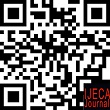Analysis of The Students Number Sense on Integer Operations Reviewed From Cognitive Style
Abstract
Keywords
Full Text:
Download [PDF]References
Adibah, F. (2015). Kreativitas Siswa SMA dalam Pemecahan Masalah Matematika Ditinjau dari Perbedaan Gaya Kognitif Field Dependent dan Field Independent. Jurnal Widyaloka IKIP Widyadarma Surabaya, 2(2), 111–124.
Busari, A. H. (2018). Cognitive Style (pp. 1–20). https://doi.org/10.4018/978-1-5225-4996-3.ch001
Cahyadi, W. (2019). Penggunaan Permainan Nara (Nata Alam Raya) dalam Meningkatkan Kemampuan Penalaran Siswa pada Materi Operasi Bilangan. Jurnal Equation: Teori dan Penelitian Pendidikan Matematika, 1(2), 173. https://doi.org/10.29300/equation.v1i2.2295
Dari, D., Kemampuan, P., Ganang, M., Hidayat, W., & Budiarto, M. T. (2014). Profil Kemampuan Number Sense Siswa Kelas VII SMP Dalam Menyelesaikan Masalah Matematika. MATHEdunesa Jurnal Ilmiah Pendidikan Matematika, 3(3).
Fahrudin Amirulloh, A. (2013). Kemampuan number sense siswa kelas vii smp dilihat dari perbedaan jenis kelamin. MATHEdunesa, 2(1).
Fitri, L., Rachmadwati, L. P. R., Ayati, J. P. R., & Muliawati, N. E. (2019). Analisis Number Sense Ditinjau dari Gaya Kognitif Reflektif-Impulsif. Jurnal Pendidikan Matematika, 10(2), 131. https://doi.org/10.36709/jpm.v10i2.7174
Gani, M., Tahmir, S., & Asdar, A. (2019). Deskripsi Kemampuan Memecahkan Masalah Matematika Open Ended Ditinjau Dari Gaya Kognitif Siswa Kelas IX SMP Negeri 1 Suli. Pedagogy : Jurnal Pendidikan Matematika, 3(2). https://doi.org/10.30605/PEDAGOGY.V3I2.1187
Ginanjar, A. Y., & Widayanti, W. (2018). Penerapan Model Pembelajaran Multiliterasi Untuk Meningkatkan Kemampuan Literasi Matematis Siswa di SD/MI. Primary: Jurnal Keilmuan dan Kependidikan Dasar, 10(2), 117–124.
H. Mudjia Rahardjo. (2010). Triangulasi dalam Penelitian Kualitatif. Universitas Islam Negeri Maulana Malik Ibrahim Malang. https://doi.org/10.1360/zd-2013-43-6-1064
Lativa eva. (2013). Pengaturan-Diri Dalam Belajar (Self Regulated Learning) Mahasiswa Ditinjau Dari Strategi Experiential Learning Dan Jenis Kelamin. In PENDIDIKAN KARAKTER DALAM PERSEPEKTIF PENDIDIKAN ISLAM (pp. 159–182.).
Oizumi, R., & Kasuyama, T. (2016). Children’s motor development assessed by throwing motion trajectory. Japan Journal of Human Growth and Development Research, 2016(72), 13–18. https://doi.org/10.5332/hatsuhatsu.2016.72_13
Purnomo, R. C., Sunardi, S., & Sugiarti, T. (2017). Profil Kreativitas dalam Pemecahan Masalah Matematika Ditinjau dari Gaya Kognitif Field Independent (FI) dan Field Dependent (FD) Siswa Kelas VIII A SMP Negeri 12 Jember. Jurnal Edukasi, 4(2), 9. https://doi.org/10.19184/jukasi.v4i2.5203
Puspananda, D. R., Khoirutunnisa’, A. U., Zainudin, M., Utami, A. D., & Rohman, N. (2017). Geometry Tower Adventure Pada Anak Usia Dini Di Desa Sukorejo Kecamatan Bojonegoro. J-ABDIPAMAS : Jurnal Pengabdian Kepada Masyarakat, 1(1), 56. https://doi.org/10.30734/j-abdipamas.v1i1.81
Sasmita, J., & Raihan, S. A. (2014). Kepemimpinan Pria dan Wanita. Proceeding of the 6Th Ncfb and Doctoral Colloquium, 225–239.
Setiana, & Purwanto. (2016). Model Pembelajaran Kooperatif Tipe TGT Untuk Meningkatkan Hasil Belajar Matematika Materi Penjumlahan Pecahan Pada Siswa Di Sekolah Dasar. Jurnal PGSD, 3(1), 80–98.
Sugiyono. (2017). Sugiyono, Metode Penelitian. Penelitian, 34–45. https://doi.org/10.1021/ol7029646
Wagner, D., & Davis, B. (2010). Feeling number: Grounding number sense in a sense of quantity. Educational Studies in Mathematics, 74(1), 39–51. https://doi.org/10.1007/s10649-009-9226-9
Woods, D. M., Ketterlin Geller, L., & Basaraba, D. (2018). Number Sense on the Number Line. Intervention in School and Clinic, 53(4), 229–236. https://doi.org/10.1177/1053451217712971
DOI: https://doi.org/10.31764/ijeca.v3i2.2657
Refbacks
- There are currently no refbacks.
Copyright (c) 2020 IJECA (International Journal of Education and Curriculum Application)

This work is licensed under a Creative Commons Attribution-ShareAlike 4.0 International License.
IJECA (International Journal of Education and Curriculum Application) already indexed:










___________________________________________________________________
| |
____________________________________________________________________
IJECA Publisher Office:







.jpg)




